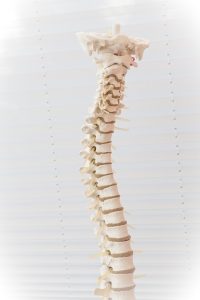Does Everyone’s Spine Eventually Break Down?
 The human spine is an incredible feat of engineering. It holds us upright, allows us to move freely, and protects our delicate internal organs. So, the idea of the spine eventually breaking down can be unnerving. The good news is that not everyone’s spine is destined for breakdown.
The human spine is an incredible feat of engineering. It holds us upright, allows us to move freely, and protects our delicate internal organs. So, the idea of the spine eventually breaking down can be unnerving. The good news is that not everyone’s spine is destined for breakdown.
The Resilient Spine: A Masterpiece of Design
Our spines are built to last. The 33 vertebrae that make up our spine are like sturdy Lego blocks, providing a perfect balance of strength, flexibility, and shock absorption. Think of them as shock absorbers for your daily activities, from lifting groceries to navigating treacherous stairs. These vertebrae are cushioned by intervertebral discs, acting like tiny pillows that protect the bones and keep them from grinding together. Ligaments and muscles add another layer of support, creating a complex system that adapts to the constant stresses of daily life.
The Aging Spine: Wear and Tear is Normal
Like any well-used machine, our spines experience some wear and tear as we age. This doesn’t mean a complete breakdown. Some common signs of aging in the spine include:
- Disc Degeneration: Over time, the discs between your vertebrae can lose moisture and elasticity, leading to pain, stiffness, and bulging.
- Arthritis: The facet joints that connect your vertebrae can develop arthritis, causing inflammation and pain.
- Osteoporosis: This condition weakens bones, making them more susceptible to fractures, especially in the spine.
But Here’s the Key: These Conditions are Not Inevitable
By taking proactive measures, we can significantly reduce the impact of these age-related changes and maintain a healthy spine for years to come. Here are some key tips:
- Move it or lose it: Regular exercise, especially activities like swimming, yoga, and Pilates, strengthens muscles and improves flexibility, supporting your spine and keeping it limber.
- Posture matters: Maintain good posture while sitting, standing, and sleeping to prevent unnecessary strain on your spine. Think tall, shoulders back, and core engaged!
- Listen to your body: Don’t ignore pain. It’s your body’s way of signaling something’s not right. Consult a healthcare professional for early diagnosis and treatment.
- Fuel your spine: Bone-healthy foods rich in calcium and vitamin D are essential for maintaining strong bones and preventing osteoporosis. Think leafy greens, dairy products, and fatty fish.
Beyond Age: Gender and the Spine
While the basic principles of spine health apply to everyone, there are some gender-specific considerations to keep in mind:
- Women: Hormonal changes during menstruation, pregnancy, and menopause can affect the musculoskeletal system, making women more susceptible to certain spine conditions like osteoporosis and sacroiliac joint pain. Additionally, anatomical differences like a wider pelvis can influence spinal alignment and posture.
- Men: Heavy lifting and physical labor, which are more common in men, can increase the risk of spine issues like spinal stenosis.
- Pain Perception and Reporting: Research suggests that men and women may experience and report pain differently, which can affect diagnosis and treatment.
The Bottom Line: Knowledge is Power
Understanding your spine and its needs empowers you to take charge of its health. By following these tips and seeking professional help when needed, you can dramatically improve your chances of enjoying a strong, pain-free spine for decades to come.
Don’t hesitate to consult us if you have any questions or concerns about your spine. We can provide personalized advice and treatment plans to keep your spine happy and healthy for years to come. Let’s work together to keep our spines strong and flexible for a lifetime!
